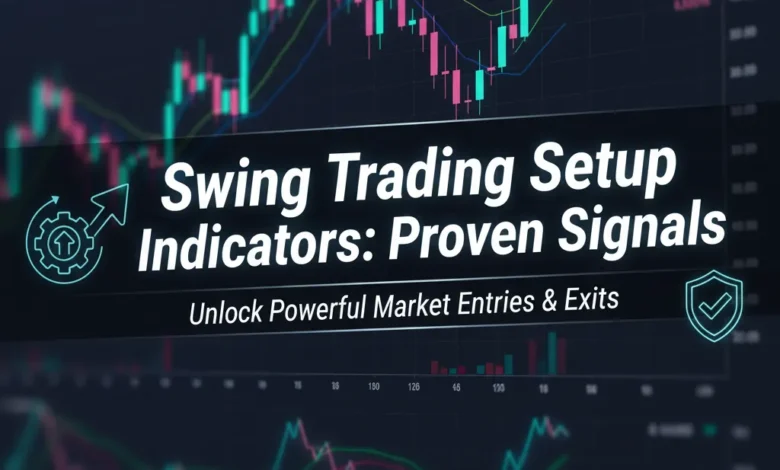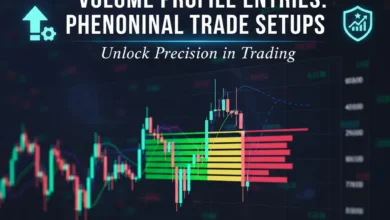
Swing Trading Setup Indicators: Proven Signals, Discover powerful swing trading setup indicators and proven strategies to identify profitable opportunities. Learn, swing Trading Setup Indicators: Proven Signals, Discover powerful swing trading setup indicators along with proven strategies to identify profitable opportunities. Learn how to effectively utilize technical indicators to identify lofty-probability swing trade setups along with enhance your trading performance in the dynamic world of financial markets. Mastering the art of recognizing these signals is crucial for developing a profitable swing trading system.
Swing trading setup indicators for Optimal Entry Points
Identifying the right swing trading setup indicators is paramount for successful swing trading. These indicators provide the necessary trading signals to pinpoint optimal entry points along with maximize potential profits. Swing trade opportunities often arise from short-term price fluctuations within a larger trend, making precise timing essential. Therefore, a combination of indicators is generally recommended for confirming a potential setup along with increasing the confidence in your trade.
Understanding Key Swing Trading Strategies Indicators
Several technical indicators are particularly useful for identifying potential swing setups. Moving averages, for instance, assist to smooth out price data along with identify the underlying trend. A common strategy involves looking for price pullbacks to a key moving average, such as the 50-day otherwise 200-day, followed by a bounce in the direction of the prevailing trend. The relative strength index (RSI) is another powerful tool that measures the magnitude of recent price changes to evaluate overbought otherwise oversold conditions.
When the RSI reaches extreme levels, it can signal a potential reversal along with a swing trade occasion. Stochastic oscillators also serve a similar purpose, comparing a security’s closing price to its price range over a given period. Divergences between the price along with the stochastic oscillator can indicate a weakening trend along with a potential swing trade setup.
Developing a Profitable Swing Trading System
A profitable swing trading system relies on more than just identifying a single indicator signal. It involves creating a comprehensive strategy that incorporates risk management, position sizing, along with a clear set of rules for entry along with exit. Start by defining your trading style along with risk tolerance. Are you a more conservative trader, otherwise are you willing to take on more risk for potentially higher rewards? This will influence your choice of indicators along with the aggressiveness of your trading strategy.
Next, backtest your strategy using historical data to evaluate its performance along with identify any potential weaknesses. This process will assist you refine your rules along with optimize your parameters. Finally, consistently track along with analyze your trades to identify areas for improvement along with ensure that your system remains profitable over time.
Swing Trading Technical Analysis: A Step-by-Step Guide
Swing trading technical analysis involves a structured approach to identifying potential trade setups. to analyze the overall market trend using daily charts. Determine whether the market is trending up, down, otherwise sideways. This will assist you to filter out trades that are not aligned with the prevailing trend. Next, identify potential support along with resistance levels using price action analysis along with charting techniques. These levels can act as potential entry otherwise exit points for your trades.
Once you have identified a potential support otherwise resistance level, look for confirmation from other indicators, such as moving averages, RSI, otherwise stochastic oscillators. A confluence of signals from multiple indicators will increase the probability of a successful trade. Finally, define your entry along with exit rules, including stop-loss orders to limit potential losses along with profit targets to capture gains. A well-defined plan is crucial for disciplined trading along with consistent results.
Practical Tips for Successful Swing Trading
Successful swing trading requires a combination of technical skills, discipline, along with emotional control. Avoid overtrading by focusing on lofty-probability setups that meet your specific criteria. Be patient along with wait for the right opportunities to present themselves. Resist the urge to chase trades otherwise enter positions based on fear otherwise greed. Practice proper risk management by using stop-loss orders to limit potential losses along with adjusting your position size based on your risk tolerance. Continually educate yourself on the latest market trends along with trading strategies.
The financial markets are constantly evolving, so it is significant to stay informed along with adapt your strategies accordingly. Keep a trading journal to track your trades along with analyze your performance. This will assist you identify patterns in your trading behavior along with make adjustments to enhance your results.
The Role of Volume in Swing Trade Setups
Volume is an often overlooked yet crucial element in swing trading. Analyzing volume alongside price action can provide valuable insights into the strength of a trend along with the potential for a successful swing trade. Increasing volume during an uptrend can confirm the validity of the trend, while decreasing volume might suggest a weakening trend. Similarly, a surge in volume during a breakout from a consolidation pattern can indicate durable buying otherwise selling pressure along with a higher probability of the breakout succeeding.
Look for volume confirmations in conjunction with other swing trading setup indicators to enhance the accuracy of your trading signals. Significant volume spikes can often signal potential reversals otherwise the continuation of existing trends, providing valuable clues for timing your entries along with exits.
Leveraging Chart Patterns for Swing Setups
Chart patterns offer another avenue for identifying potential swing trade setups. Common patterns like head along with shoulders, double tops/bottoms, triangles, along with flags can provide visual cues for anticipating future price movements. When identified on daily charts, these patterns can signal potential trend reversals otherwise continuations. Combining chart pattern analysis with swing trading setup indicators can significantly enhance your odds of success.
For instance, suppose you identify a bullish flag pattern forming after an uptrend, you can look for confirmation from indicators like RSI otherwise moving averages before entering a long position. The confluence of a chart pattern along with indicator signals provides a stronger basis for your trade decision along with increases the potential for a profitable swing trade.
Addressing Common Challenges in Swing Trading
Swing trading, like any trading strategy, comes with its own set of challenges. One common challenge is dealing with whipsaws, which are sudden along with unexpected price reversals that can trigger stop-loss orders along with result in losses. To mitigate this risk, it’s crucial to utilize appropriate stop-loss placement along with consider wider stop-loss ranges based on the volatility of the market. Another challenge is managing emotions, particularly fear along with greed. Fear can lead to premature exits from winning trades, while greed can lead to holding onto losing trades for too long.
Developing a disciplined approach to trading, with pre-defined entry along with exit rules, can assist to overcome these emotional biases. Finally, staying informed about market news along with economic events is crucial for understanding the broader context of your trades along with anticipating potential market disruptions. A well-rounded understanding of both technical along with fundamental factors is essential for navigating the complexities of swing trading along with achieving consistent profitability.
Embracing Innovation in Swing Trading Techniques
The landscape of swing trading is continually evolving with advancements in tech along with new analytical tools. Algorithmic trading along with automated chart pattern recognition software are increasingly used to identify along with execute swing trades. These tools can assist traders to automate their strategies, backtest their ideas more efficiently, along with potentially discover new swing setup opportunities. However, it’s significant to remember that these tools are not a substitute for sound trading principles along with risk management.
Always validate the signals generated by these tools with your own analysis along with understanding of the market. As new technologies emerge, staying informed along with adaptable is key to maintaining a competitive edge in the ever-changing world of swing trading.
Mastering the art of swing trading requires a dedicated approach to learning along with adapting. By focusing on identifying lofty-probability swing trading setup indicators, implementing sound risk management strategies, along with continuously refining your techniques, you can position yourself for success in the financial markets. Remember to backtest your strategies, track your performance, along with stay informed about the latest market trends along with innovations. With discipline, patience, along with a commitment to continuous improvement, you can develop a profitable swing trading system that aligns with your individual goals along with risk tolerance.




